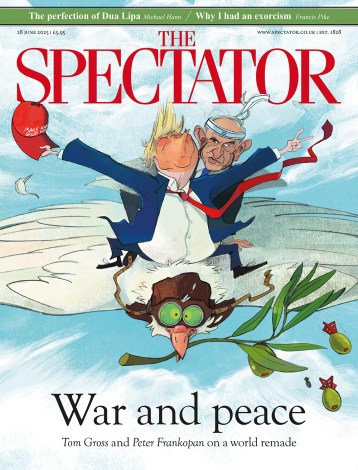Lohengrin
Royal Opera House
Nietzsche said of the prelude to Act I of Lohengrin that it was the first piece of hypnosis by music, and listening to the Royal Opera orchestra’s performance of it under Semyon Bychkov tended to confirm his claim, at any rate until the climax, where Bychkov pulled out a few stops too many, and made the piece sound almost vulgar. The opening, however, was exquisite, entrancing, the divided violins playing with such piercing sweetness that Wagner’s phenomenal feat of evoking the mystical by sensuous, even sensual means was as potent as I have ever heard it. This prelude, which has no predecessor in any work, retains its power to move and dazzle as much as any he wrote.
Lohengrin is perhaps the work where the gap between surface beauty and underlying significance is the greatest in Wagner’s oeuvre. That means that, though its musical interpretation is not open to much variation, its dramatic direction certainly is. Is it a fairy tale, as it appears to be, with a maiden in distress, a knight in shining armour arriving in a boat drawn by a swan, a sorceress? Is it an historical grand opera, with King Henry rallying the troops to keep the ‘hordes from the East’ at bay? Is it a study, primarily, of taboos and even incest, with the never-explored relationship between Elsa and her brother Gottfried, who here, when he appeared in the last moments of the opera, kissed her passionately before she sank lifeless? It’s all those things, but how to make it convincing in such disparate ways is a secret so far undiscovered. The most sumptuous productions, such as Wieland Wagner’s in the 1960s and Karajan’s in Salzburg, make it as gorgeous, almost, to look at as to hear, but leave unruffled any questions about human relationships it may raise.
Elijah Moshinsky’s production, first seen in Covent Garden in 1977, is now so purged of props as to be reliant almost entirely on what the singers do, and what they carry, for any indications as to what they are involved in. There are totem poles and also Christian processional objects, and the King is surrounded by a sacred space, so his Herald largely speaks for him. But what the nature of the two villains’ plotting is remains obscure. Petra Lang, an excellent artist, though not with an Ortrud-sized voice, would chew the scenery if there were any. She is intense but two-dimensional. The Telramund of Gerd Grochowski is first-rate, a weak man but a strong singer and presence. Elsa looks ideal as she enters, but Edith Haller gives a quite inadequate account, vocally, of her lovely role. In Act I she skirted disaster, in the following two acts she was tolerable but not any kind of positive figure. So a great deal, even more than usual, depended on the Lohengrin of Johan Botha. I first saw him in this role 12 years ago, when he was unsatisfactory on all counts. Now he sings it quite marvellously, shaping his Narration with subtle gradations of volume such as one rarely hears, and always in tune.
Bychkov, though his conducting has many virtues, including being in love with every bar of it, rather overdoes his enthusiasm by opening two routine and I think justified cuts, and including, as almost no one ever has, the second part of the Narration, which Wagner instructed Liszt to omit. After Lohengrin has revealed his paternity and his name, this is an anti-climax. Botha made of it what he could. Fortunately, the role of Lohengrin is the most static among that of Wagner’s heroes, and so this man-mountain, clad in a loose robe, was able to stand and deliver without incongruous effect, though an embrace from Elsa would have been risky.
Still, what is this opera about? By the time Wagner came to expound it, several years after it was written, he had decided that Lohengrin is at least as much in need of Elsa as she is of him. He so wants to be loved for himself alone, and not for his status and origins, that he insists on remaining a mystery — this is a paradoxical but subtle idea. And Wagner found he could identify with it, for he was wondering why anyone should take his art as seriously as he wanted them to, and so made Lohengrin into the type of the ‘absolute artist’, beyond criticism, but also, it turns out, asking — and not entitled to ask — for too much from his audience. Once having raised that issue, it is hardly surprising that Wagner found it stopped him in his tracks, and he wrote no music to speak of for five years. But in the face of that understanding of the opera, this production, ancient as it now is, had nothing to contribute. Even so, thanks to most of the performers the very long evening is a musical treat.





Comments